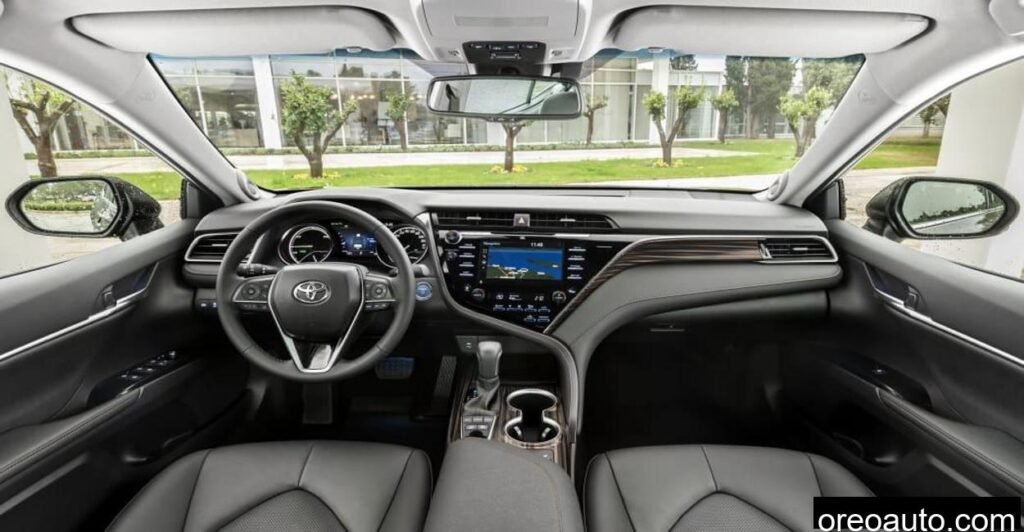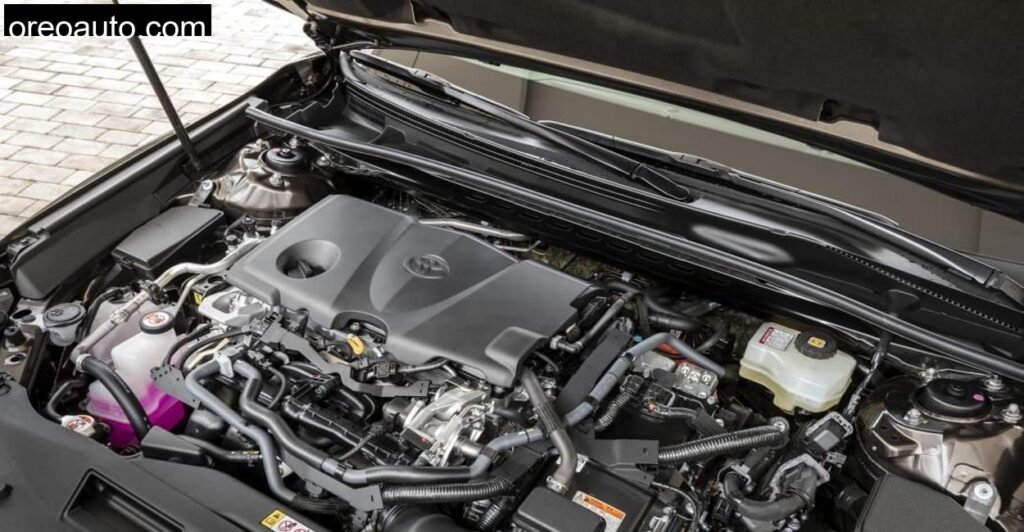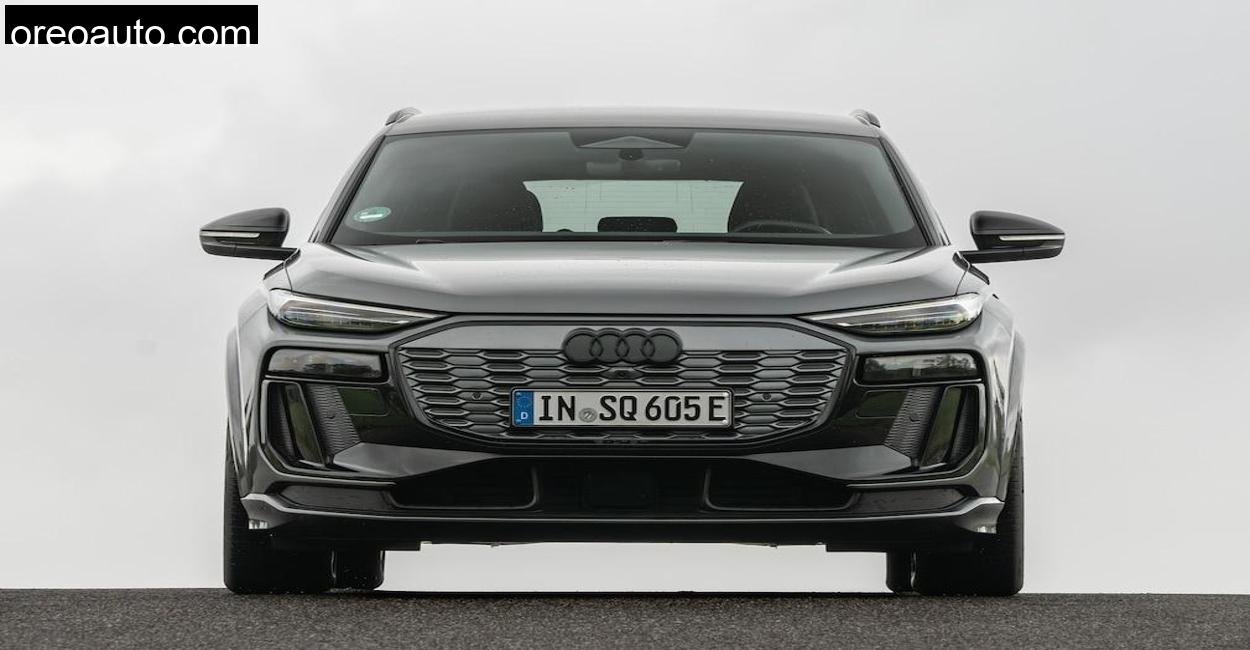There’s something about a midsize sedan in a forested, winding stretch like Finne that brings out the best in both machine and driver. It was early autumn when I pulled the Toyota Camry into the beech, framed trail leading away from Eckartsberga. Mist floated over the low fields like smoke, the trees still holding onto their golden leaves. And there stood the Camry , long, confident, quietly reserved in the way only a Japanese executive sedan can be. You’d never think this car was an endangered species on German roads. But it is.
This isn’t a new car anymore, and that makes it even more intriguing. The Camry Hybrid , discontinued in Germany in 2021 , is now the great unknown. A sedan that never got the traction it deserved. So I spent two days driving the Camry around Finne’s undulating elevations, across rustic B, roads, sharp ascents, and empty stretches ideal for gliding. What I found was a car with the stature of an E, Class, the restraint of a monk, and the quiet confidence of something made to last forever.
Big Car, Understated Entry
There’s no mistaking the sheer size of the Camry when you stand next to it. At nearly 4.9 meters long and 1.84 meters wide, it occupies road space like a seasoned autobahn cruiser. And yet it wears none of the typical European vanity. No chrome overdose. No exaggerated grille screaming for attention. It’s elegant, but not boastful. Under the hood, Toyota has stuffed a 2.5, liter Atkinson, cycle petrol engine paired with a 120 hp electric motor, making a combined 218 hp. The CVT gearbox feeds that power to the front wheels.
In the quiet morning mist, I started the car and heard… nothing. Typical hybrid. The electric motor hums imperceptibly and the Camry glides off like a specter. There’s a mild serenity to the way it pulls away that few modern sedans can match. You don’t prod it , you sail.
Cabin Life: Comfortable Silence

On the smooth backroads past Bad Bibra, the Camry’s cabin became a true sanctuary. It’s not opulent in the S, Class sense , no massaging seats or touchscreen bonanza , but it’s soothing. Toyota has mastered what I’d call silent luxury. The materials feel just right: soft, touch surfaces, precise stitching, and switches with a muted, deliberate action. In the Executive trim we tested, there were heated leather seats, dual, zone climate control, blind, spot monitoring, adaptive cruise, and an infotainment system that’s functional but years behind German rivals in graphics and response.
But inside, none of that bothered me. Why? Because the seat holds you like a reading chair. Rear passengers, meanwhile, sit with immense legroom , though anyone over 1.85 meters will find headroom tight. The ride is tuned for calm. It doesn’t smother bumps completely but isolates them with grace. The Camry seems to float, not bounce, over broken tarmac. It’s a gentle giant.
Finne’s Hills and Hybrid Power

If the Camry is a city commuter in disguise, Finne exposed its deeper layers. I took it up the stretch between Bucha and Lossa, where elevation swings up and down in gentle waves. It’s the kind of road that would confuse a soft cruiser, but the Camry held composure. The steering is light , almost too light for enthusiast tastes , but accurate. The low center of gravity and solid chassis made descending corners feel natural, even at speeds I probably shouldn’t mention.
The hybrid powertrain doesn’t surge, but it delivers consistent, accessible torque. Between 60 and 100 km/h, overtakes were surprisingly brisk. The CVT is perhaps the only debatable point. At full throttle, it sends the engine soaring into the upper revs in a way that’s more dramatic than necessary. Yet Toyota has done much to suppress the drone , insulation has improved drastically. On a full, throttle entry onto a country bypass, it still sounded more composed than older hybrids I’ve driven.
Fuel Economy in the Real World
Driving the Camry in a mix of uphill backroads, village streets, and a short autobahn sprint yielded a remarkable average: 5.2 liters per 100 km. That’s better than the WLTP, rated 5.5, and within spitting distance 5.4 L/100 km test result. I saw the lowest figures during low, speed descents where the regenerative braking seamlessly recharged the battery. Around Finne’s villages, I often glided on electricity alone , for up to 2 km at a time , without touching the petrol engine. The hybrid system is so intuitive that you never notice when it switches from EV to gas.
City driving , say, in and out of Weimar , returned 4.0 to 4.3 L/100 km on average. The real genius is that you never have to think about charging. This isn’t a plug, in hybrid. There’s no cable, no port. Just a system that quietly reclaims energy while you drive, brake, and coast.
Trunk, Practicality, and the Camry’s Suitcase Test
In our usual test , fitting bike gear, helmet, tools, and a rucksack into the boot , the Camry handled everything. Toyota claims 524 liters of boot space. Measured a slightly more modest 490 liters. What matters is that it’s wide, deep, and fairly accessible. There’s a high loading lip (69 cm) and a 16 cm step inside the boot that can be annoying, especially if you’re pulling out heavy luggage. But once it’s in, it stays. I hauled two full, size suitcases, a backpack, and a toolbox into it, and still had room to spare.
Folding the rear seats down reveals a narrow pass, through , good for skis or long, thin gear, but not wide enough for a large bike frame unless you remove wheels.
Safety and Tech: Quietly Equipped
For something that’s understated in personality, the Camry comes packed with safety tech. Lane keep assist worked gently but persistently on the winding B250 stretch, and adaptive cruise controlled the car smoothly on an autobahn glide toward Naumburg. The blind spot monitor and rear cross, traffic alert were precise , not overly cautious like in some compact crossovers.
One standout was the camera, based traffic sign recognition. It displayed the correct limits quickly and accurately, even through the filtered light of Finne’s forests. All trims, even the base Business Edition, offer this full safety package. The Executive trim we had also had 18, inch alloys, premium audio, navigation, and powered steering wheel adjustment. The Luxury trim, if you can find it used, adds a JBL system, 3, zone climate control, and electric rear seats.
Technical Specifications
For up-to-date and accurate specs, we rely on Toyota’s official web data.
| Specification | Detail |
| Engine | 2.5L 4, cylinder petrol with hybrid motor |
| System Output | 160 kW / 218 hp |
| Torque (Petrol) | 221 Nm @ 3600 rpm |
| Transmission | CVT (E, CVT, planetary gear set) |
| 0, 100 km/h | 8.3 seconds |
| Top Speed | 180 km/h |
| WLTP Fuel Consumption | 5.3 , 5.5 L/100 km (Real: 5.2 L/100 km) |
| CO₂ Emissions | 120 , 126 g/km |
| Dimensions (L/W/H) | 4.89 m / 1.84 m / 1.45 m |
| Boot Volume | 524 L (Measured: 490 L) |
| Kerb Weight | 1595 , 1660 kg |
| Starting Price (Germany, 2021) | €41,990 (Executive: €44,990) |
Conclusion: A Sedan That Deserved Better
The Camry is not a car that shouts. It doesn’t tempt you with gimmicks. But over my two, day test in Finne, it won me over through something more important , consistency. It’s spacious, frugal, refined, and impeccably put together. As I steered the car back toward Bad Sulza, the silence of the drive felt like a final nod from a car that was never meant to be loud.
It’s a shame that Germany never truly welcomed the Camry. Maybe it was too restrained, too unspectacular for a market addicted to SUVs and turbo diesels. But for those of us who value balance, longevity, and real, world usability , this Toyota is a quiet triumph. A used Camry isn’t a compromise. It’s a decision to drive something that works every time, everywhere.
Is the Toyota Camry still available new in Germany?
No, it was discontinued in 2021. It is now only available on the used market.
Does the Toyota Camry hybrid system require plugging in?
No. The Camry uses a self, charging hybrid system. It charges through regenerative braking and coasting.
Is the Toyota Camry trunk large enough for family trips or bike gear?
Yes. With 490, 524 liters of space, it’s very practical. Though the pass, through is narrow, the volume is ample.











